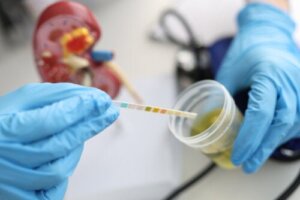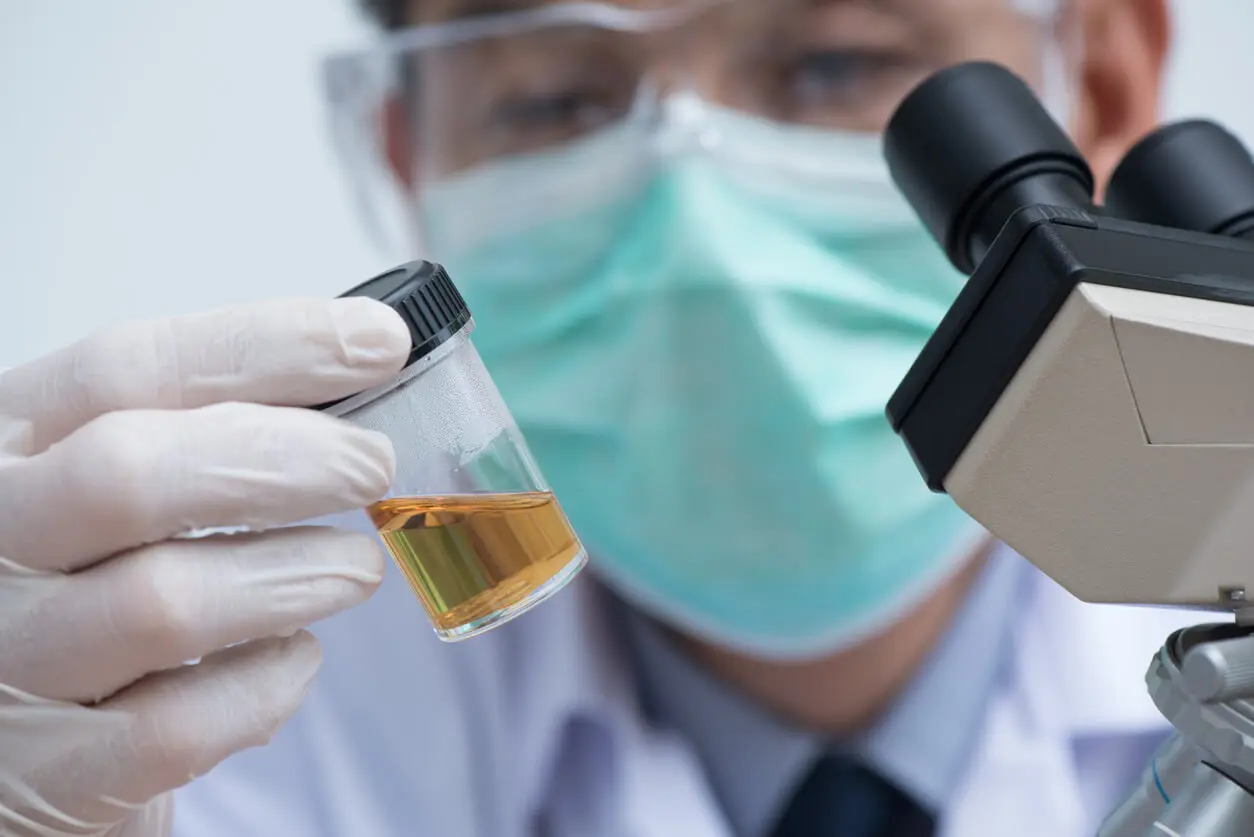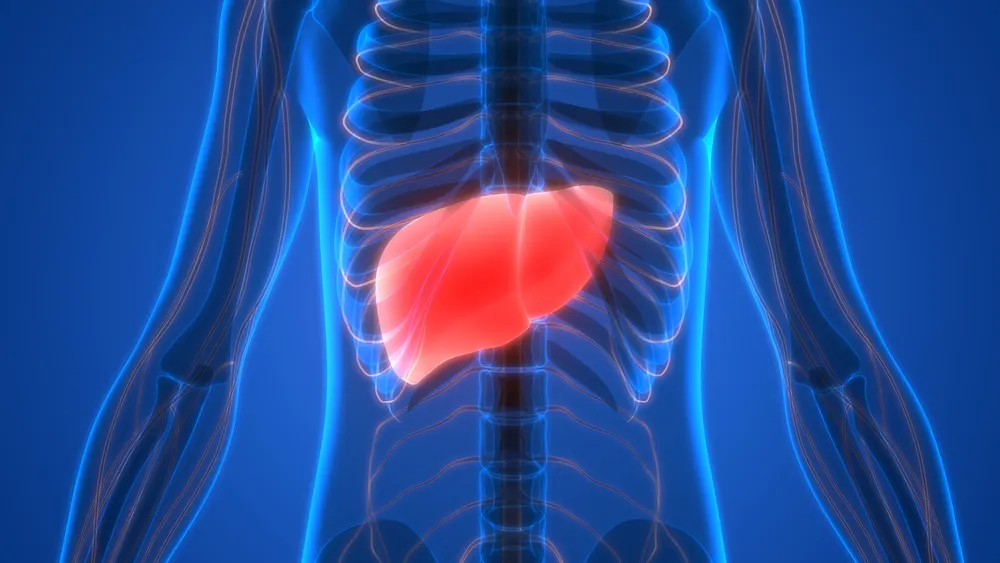Urobilinogen in Urine: Causes and Normal Values


Written and verified by the doctor Maryel Alvarado Nieto
A urine test or urine analysis is the oldest complementary study and one of the most requested tests in the medical practice. The interpretation of the results obtained should bear in mind the context of each patient to avoid diagnostic errors. This partial test determines the presence of certain compounds, including urobilinogen, which is responsible for giving the urine its yellowish coloration.
The concentration of urobilinogen in urine is usually evaluated using test strips. These plastic strips determine various parameters through the visualization of reagent pads arranged for each compound.
The subsequent comparison of the coloration observed on each pad with the scale provided by the manufacturer allows the estimation of a relative concentration of the substance in the urine.
How is urobilinogen produced?
Urobilinogen is a pigment derived from the metabolism of bilirubin. It comes largely from the degradation of erythrocytes.
In this process, the heme group of hemoglobin is transformed into biliverdin, which is then converted into bilirubin by an enzyme. This molecule, known as “unconjugated” or “indirect” bilirubin (NCB), has a configuration that makes it difficult to excrete, so it must bind to albumin, which transports it to the liver.
Upon reaching the liver, NCB enters the cell, where it’s conjugated with glucuronic acid to form direct or conjugated bilirubin (CB). The more soluble configuration of this form allows it to be excreted into the intestine via the bile.
In the intestine, bacterial flora transforms part of the bilirubin into a series of pigments known as “urobilinogens,” whose derivatives impart the brown coloration to the stool.
The enterohepatic circulation
However, some of the urobilinogen is reabsorbed in the intestine into the blood vessels, forming the enterohepatic circulation. Because urobilinogen is a fairly soluble pigment, it doesn’t need to bind to any proteins for transport, being excreted back into the bile.
However, a small percentage remains in the general circulation. When it reaches the kidneys, it’s filtered into the urine, which gives it its characteristic an amber coloration.

Normal urobilinogen values
When the determination of urobilinogen levels in urine is done by means of urine test strips, the value obtained is only an estimate. Therefore, this type of analysis is considered qualitative or semi-quantitative.
Likewise, since urobilinogen is a compound that is easily oxidized, its actual concentration can be affected by exposure to light, especially when the sample takes a long time to be processed.
Commercial companies consider a concentration lower than 1 mg/dL to be within normal limits. However, some authors accept that concentrations up to 3 mg/dL may not be pathological. However, it should always be evaluated in the context of the patient.
On the other hand, the absence of urobilinogen in urinalysis doesn’t usually have clinical significance due to the easy degradation of this pigment.
The causes of increased urobilinogen in urine
Urobilinogen by itself is not considered a diagnostic parameter of disease, but it’s clinically useful in certain conditions. Because it’s a pigment that’s a product of bilirubin metabolism, interpretation of an altered result usually includes an analysis of the behavior of both substances.
The main reasons why urobilinogen may be elevated are described below.
Hepatitis-related diseases
Hepatitis causes inflammation and variable injury to liver tissue. The most frequent cause is infection by one of the hepatitis viruses.
In acute forms, nonspecific symptoms appear and then give rise to the icteric phase, which is characterized by obvious yellowing of the skin and mucous membranes. This mucocutaneous pigmentation is a product of bilirubin accumulation in the bloodstream.
Elevated urine urobilinogen may serve as an early finding of liver injury. For this reason, it’s believed that the presence of trivial clinical manifestations together with an altered urine test with increased urobilinogen can serve as an early suspicion of liver disease.

We think you may also enjoy reading this article: Dark or Cloudy Urine: 11 Possible Causes and Their Treatment
Hemolytic anemia
In cases of hemolytic anemias, there’s increased destruction of erythrocytes. The causes for this phenomenon vary.
As more hemoglobin is degraded, an increase in bilirubin occurs, with a predominance of the indirect fraction (CB). However, since liver function is unaltered, part of this substance is transformed into conjugated bilirubin.
This slight increase in CB allows a greater secretion of the molecule through the bile, reaching the intestinal tract. There, bacteria metabolize this compound, producing a slightly higher amount of urobilinogen than is normally synthesized. Therefore, this excess urobilinogen is reabsorbed by the enterohepatic circulation, with some of it being filtered into the urine. An increased concentration will be recorded in this case.
Like this article? You may also like to read: 8 Types of Urine That May Say Something Important About Your Health
Conditions that decrease urobilinogen in urine
Although the absence of urobilinogen isn’t considered a symptom of a disease, the correlation with the patient’s clinical manifestations allows this result to be useful. This is especially the case if the urine sample collection and processing conditions are optimal.
Therefore, it’s not prudent for doctors to dismiss the finding of increased urobilinogen. Assuming that it’s the oxidation of the compound is not always correct.
Negative urine urobilinogen may be the expression of obstructive bile duct pathology. In this case, the patient usually also presents with abdominal pain and jaundice (although the latter may be absent).
In addition, the stool also becomes whitish (acholia) due to lack of pigmentation. The urine, on the other hand, has a dark color (choluria) due to the passage of conjugated bilirubin (CB) through renal filtration.
On the other hand, the use of drugs can also decrease urobilinogen in the urine. Antibiotic therapy with sulfonamides is the main cause of this phenomenon. That’s why it’s necessary for doctors to ask if you’re taking any medications if this symptom appears.
Similarly, general recommendations should be given for the correct collection and transport of the sample to the laboratory. This is in order to prevent any alterations in the results.
All cited sources were thoroughly reviewed by our team to ensure their quality, reliability, currency, and validity. The bibliography of this article was considered reliable and of academic or scientific accuracy.
- Kumar, V., Gill, K. D., Kumar, V., & Gill, K. D. (2018). Qualitative Test for Bile Pigments and Urobilinogen in Urine. https://link.springer.com/chapter/10.1007/978-981-10-8186-6_31
- Milani, D. A. Q., & Jialal, I. (2023). Urinalysis. In StatPearls [Internet]. StatPearls Publishing. https://www.ncbi.nlm.nih.gov/books/NBK557685/
- Roberts, J. R. (2015). InFocus: Urine Dipstick Testing: Everything You Need to Know. Emergency Medicine News, 37(5), 14-17. https://journals.lww.com/em-news/fulltext/2015/05000/InFocus__Urine_Dipstick_Testing_Everything_You.10.aspx
- Guerra Ruiz, A. R., Crespo, J., López Martínez, R. M., Iruzubieta, P., Casals Mercadal, G., Lalana Garcés, M., … & Morales Ruiz, M. (2021). Measurement and clinical usefulness of bilirubin in liver disease. Advances in Laboratory Medicine/Avances en Medicina de Laboratorio, 2(3), 352-361. https://www.degruyter.com/document/doi/10.1515/almed-2021-0047/html
This text is provided for informational purposes only and does not replace consultation with a professional. If in doubt, consult your specialist.








